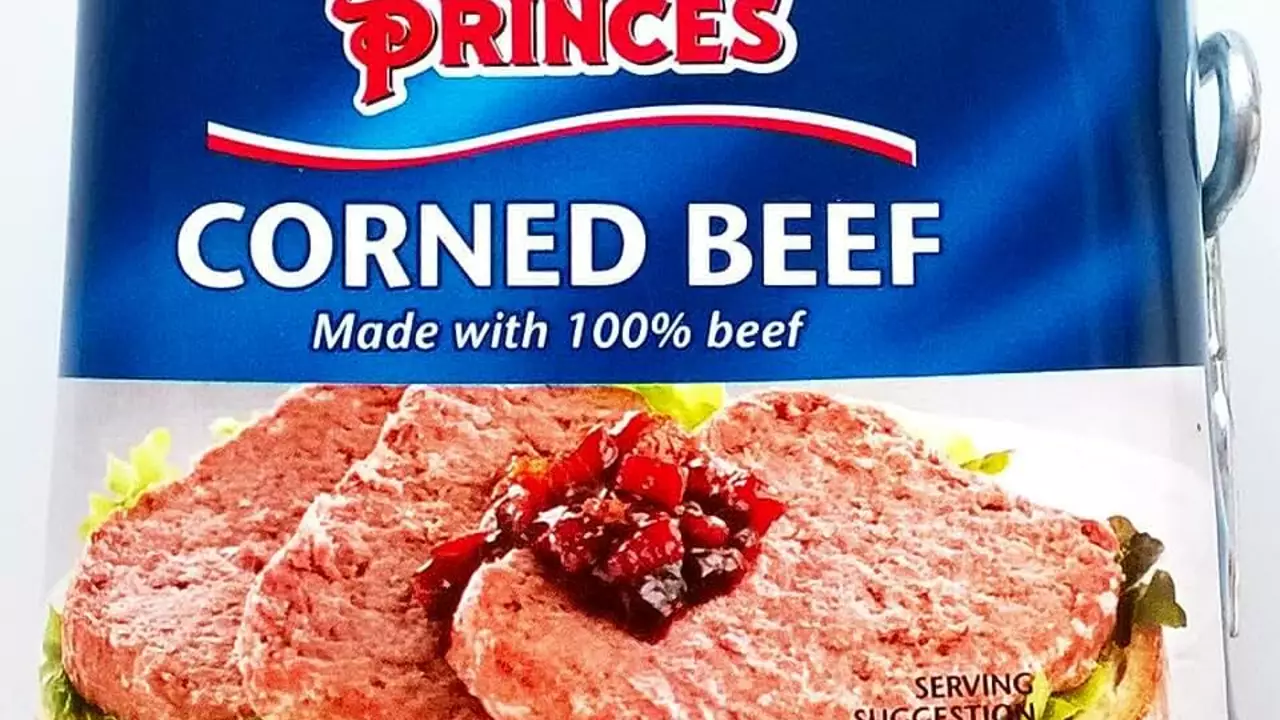Exploring the Meaty Mystery: Ground Beef Vs. Corned Beef
Hey there, Merrick here. So, here's a question that has been bouncing around in my mind off late: Can we use ground beef to make corned beef? It's a bit like wondering if you can use a surfboard to snowboard, isn't it? To settle this meaty mystery, let's first sink our teeth into understanding these two beef varieties better.
Ground beef, probably the workhorse of an average American kitchen, is nothing but beef that's been finely chopped by a meat grinder. A versatile chameleon, it finds its place in lasagnas, tacos, chili, and mean burger patties. Flipping the page, corned beef, on the other hand, is essentially brisket - a cut of beef from the breast or lower chest of a cow, cured or pickled in a seasoned brine with 'corns' of rock salt, hence the name 'corned' beef.
Now, the big question – Can we literally grind the beef, toss it in a pot with some rock salts, and end up with a spitting image of corned beef? Well, in the spirit of honesty, not really. Yet, the question presents a fascinating culinary journey - the ground beef railroad leading to Corned Beef Central Station, if you will. It's a journey I embarked on last spring, ironically enough, in a failed attempt to make my mom's notorious corned beef hash recipe with ground beef, potatoes, onions, and memories of my fumbled attempts at cooking in my college days.
The Journey: Understanding Corned Beef Preparation
Ah, the memories. But, enough nostalgia, let's get back to the beef of the matter. It's crucial, you see, to understand the process of making corned beef. The traditional recipe calls for a specific cut of beef, the brisket, which is then cured or brined. The brisket is immersed in a salty water mixture, usually containing saltpeter, brown sugar, and a variety of spices. This mix is then refrigerated for a period of time, generally 5 to 7 days, to allow for the meat to absorb the flavors and cure.
Following this, the brined beef is slow-cooked till tender. The meat turns a lovely deep pink, adopts a slightly tangy flavor profile, and thus, becomes corned beef. This delight is then served up, thinly sliced, with cabbage or diced and hashed in a hearty breakfast, or even layered in a scrumptious Reuben sandwich.
Ground beef, on the other hand, is a whole different story. It's typically just ground-up beef with a varying fat content. It's a quicker cooking ingredient making it ideal for those last-minute burger cravings or hasty weeknight spaghetti Bolognese dinners. You see, the texture, the fat content, the method of cooking, it's all different!
Corned Beef - A Fusion of Flavors Worth the Wait
Now, beyond the methodology is the experience. Preparing corned beef isn't just about following a process, but it's about coaxing out flavors, about patience, and about the joy of coming back days later to something transformed, something magical. It's that maddeningly tantalizing wait akin to the wait that Charlie had for his letters in the "The Perks of Being a Wallflower" – it’s almost unbearable, yet worth every second in the end!
As the beef brisket swims and bobs about in its saline solution, it doesn’t just absorb the salt, but rather a symphony of flavors. This approach is starkly different from cooking with ground beef where flavors are typically added while cooking and mostly stay on the surface. With corned beef, the brining process results in a deeply infused flavor that is entirely different from a simple marinade counter-part.
Science Behind the Scenes: Why Ground Beef Cannot Morph Into Corned Beef
Now, coming to the scientific nitty-gritty that really drives the point home: The curing process works best on whole cuts of meat rather than ground meat due to the role of myoglobin, a protein responsible for the red color of meat. When the nitrites in the brine interact with the meat’s myoglobin, it forms nitrosomyoglobin, thus lending that characteristic pink hue of corned beef post-curing.
Sadly, for our ground beef, the grinding process has already exposed more myoglobin which reacts with oxygen and discolours prior to any curing, thus making it a poor choice for a corned beef substitute. Oh, the science of it all! It’s a bit like the tear-jerking realization in some movie moment when you find out the person you desire is just not right for you. As I said, much like my college cooking experiments, one learns, often the hard way.
So that's it, folks. Ground beef, for all its versatility and yummy goodness, just doesn't cut it when it comes to making corned beef. While a corned ground beef might give you flavors that are somewhat reminiscent of the real deal, the texture, color, and overall gastronomic experience would simply not measure up. It would be like expecting Ryan Gosling to play the Hulk – just doesn't quite fit, right?
In conclusion, I'll borrow the words of Harry Burns from "When Harry Met Sally," - "...when you realize you want to spend the rest of your life with somebody, you want the rest of your life to start as soon as possible." So when you want real Corned Beef, don’t resort to ground beef, stay patient, endure the curing and cooking process, I assure you it will be worth the wait! Cheers to all the meaty goodness headed your way!
